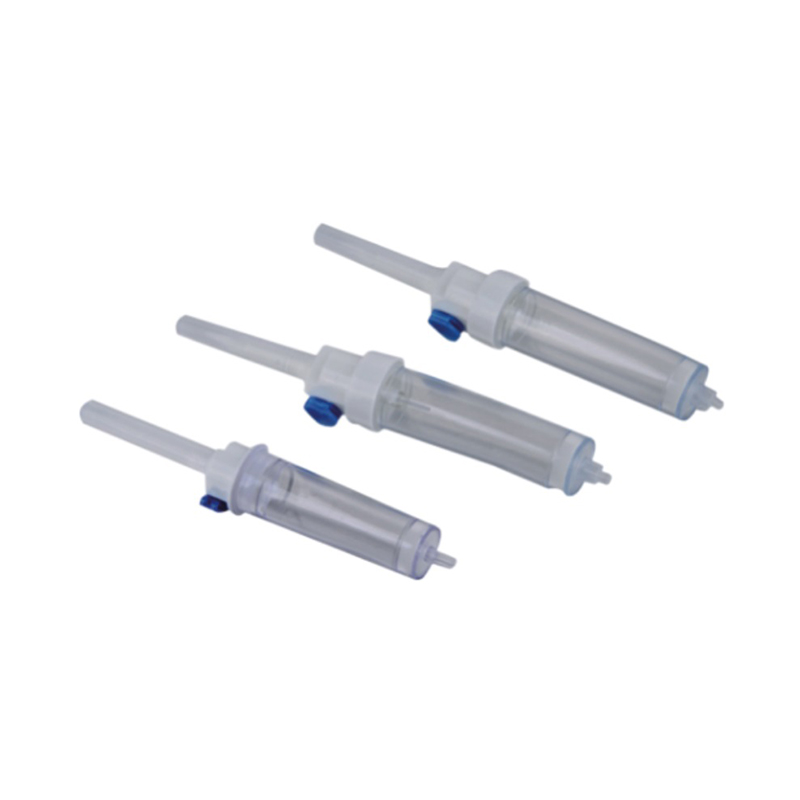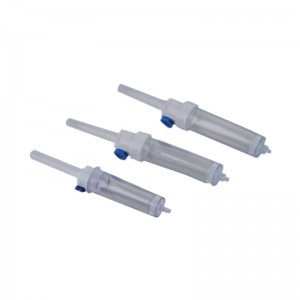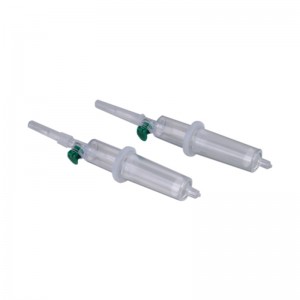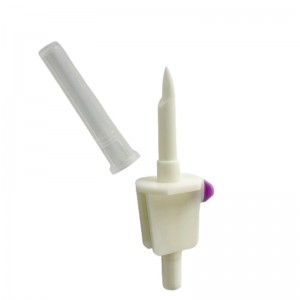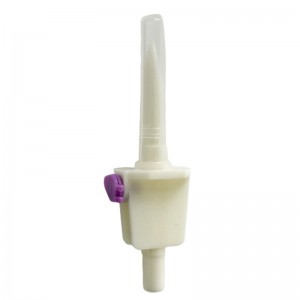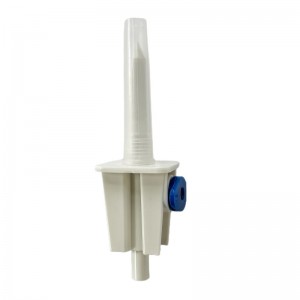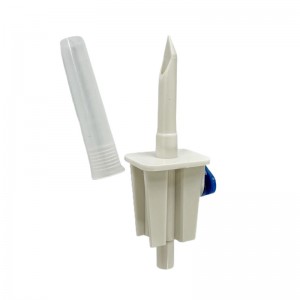Infusion Chamber and Spike for medical use
An infusion chamber and spike are components commonly used in medical settings for the administration of fluids or medications directly into the bloodstream. Here's a brief explanation of each:Infusion Chamber: An infusion chamber, also known as a drip chamber, is a transparent, cylindrical container that is part of an intravenous (IV) administration set. It is typically placed between the IV bag and the patient's intravenous catheter or needle. The purpose of the infusion chamber is to monitor the flow rate of the administered fluid and prevent air bubbles from entering the patient's bloodstream.The fluid from the IV bag enters the chamber through an inlet, and its flow rate is visually observed as it passes through the chamber. Air bubbles, if any, tend to rise to the top of the chamber, where they can be easily identified and removed before the fluid continues to flow into the patient's vein.Spike: A spike is a sharp, pointed device that is inserted into the rubber stopper or port of an IV bag or medication vial. It facilitates the transfer of fluids or medications from the container into the infusion chamber or other components of the IV administration set. The spike usually has a filter to prevent particulate matter or contaminants from entering the infusion system.When the spike is inserted into the rubber stopper, the fluid or medication can then flow freely through the IV tubing and into the infusion chamber. The spike is typically connected to the rest of the IV administration set, which may include flow regulators, injection ports, and tubing leading to the patient's intravenous access site.Together, the infusion chamber and spike play a crucial role in ensuring the safe and controlled delivery of fluids or medications to patients undergoing intravenous therapy.

